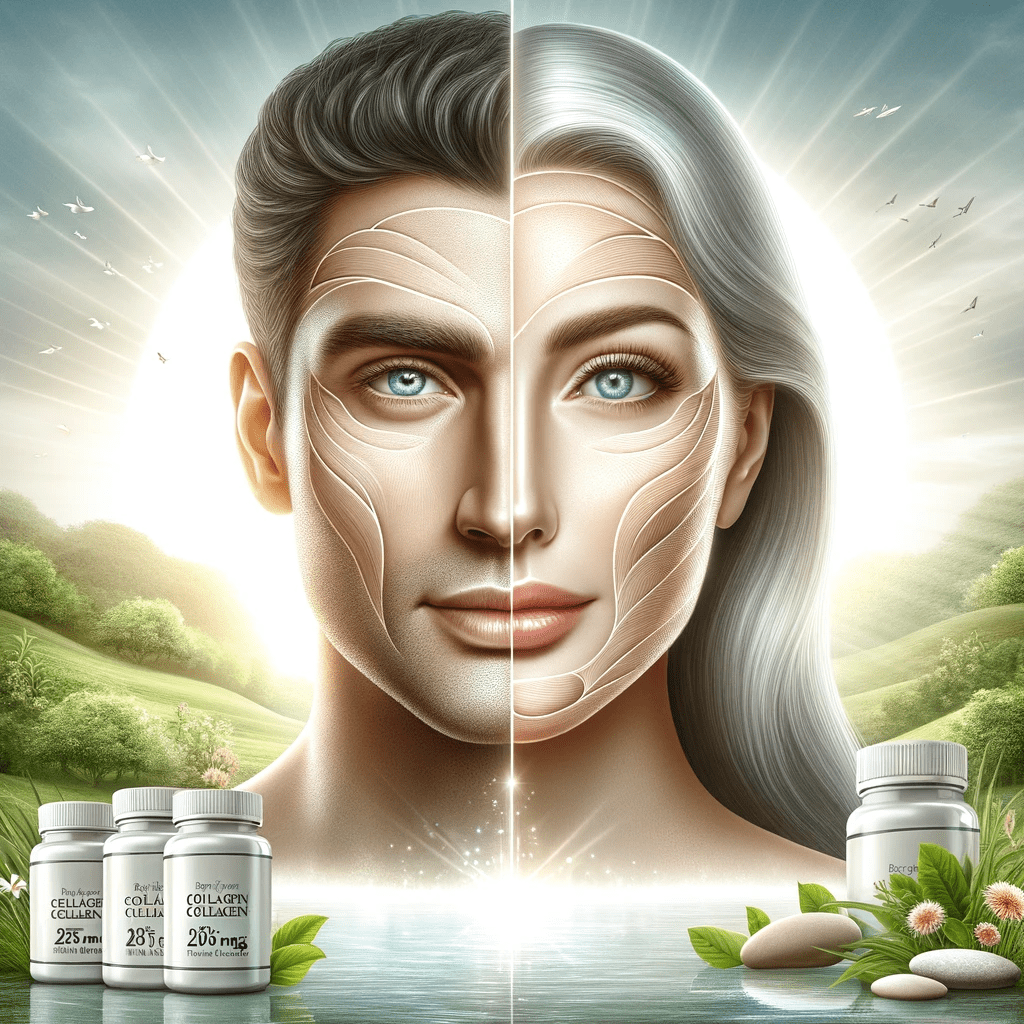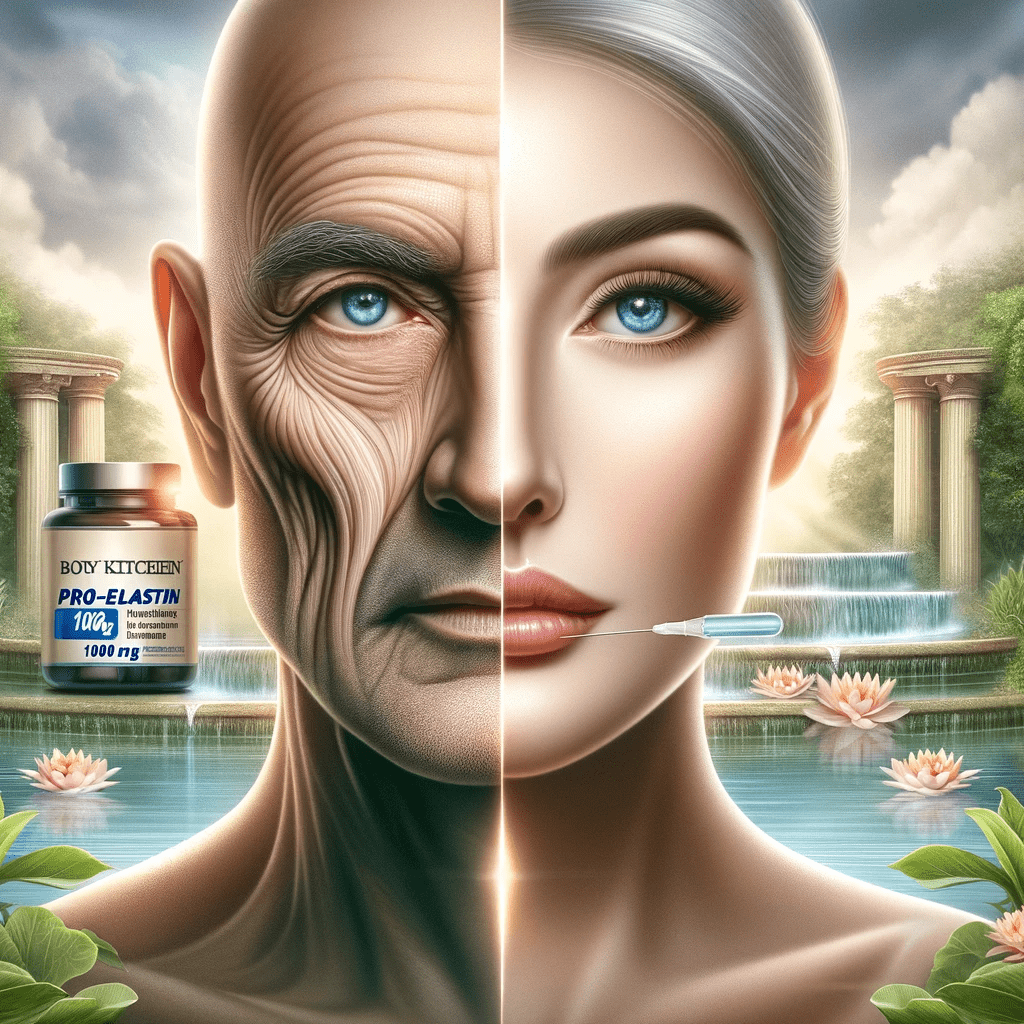Definition
Elastin is a fibrous protein that provides elasticity and flexibility to connective tissues in the body, including the skin, blood vessels, and other structures.
Expanded Explanation
The protein elastin gives the skin elasticity, enabling it to regain its original shape even after being stretched. It works with other structural proteins, such as collagen, to support the skin’s integrity and youthful appearance. As we age, elastin production decreases, leading to a loss of elasticity, wrinkles, and sagging skin formation.
Elastin Production
Fibroblasts in connective tissue synthesize this protein, cross-linking molecules into a stable fibre network during formation. It is highly durable and slowly turns over, taking time to replace damaged or degraded fibres.
Elastin and Aging
Our bodies produce less elastin as we age, and existing fibres lose functionality. Sun exposure, smoking, and pollution accelerate this breakdown, hastening skin aging. However, skincare ingredients such as retinol and peptides can stimulate its production, enhancing skin elasticity.
Examples
Example 1: Elastin fibres help the skin return to its original shape after being stretched or pinched.
Example 2: Decreased elastin production contributes to wrinkles and sagging skin formation.
Related Terms
Collagen: The human body contains a significant amount of collagen, the most abundant protein. It provides strength and elasticity to different tissues, particularly the skin. Collagen is vital to connective tissues such as bones, tendons, ligaments, and cartilage. It helps maintain the skin’s elasticity, strengthens the bones, and improves joint flexibility. However, the natural production of collagen declines with age, leading to wrinkles, sagging skin, and weaker joints.
Fibroblasts: Fibroblasts are specialized cells in connective tissue, are integral to maintaining skin structure and elasticity. They synthesize and secrete crucial extracellular matrix proteins such as collagen and elastin, contributing significantly to skin health, wound healing, and tissue repair. By producing these essential proteins, fibroblasts play a pivotal role in forming the skin’s structural framework and maintaining its integrity and suppleness, which are crucial for skin renewal, repair, and regeneration.
Visual and Product Aids
External Resources
UConn Today: Mechanical Engineering features Assistant Professor Anna Tarakanova’s work, a specialist in the mechanics of biological systems and materials. Her research establishes a detailed model for elastin, examining its behaviour under aging, diabetes, cardiovascular disease, and osteoarthritis. This approach seeks to unravel how these conditions affect elastin. Consequently, her team’s insights pave the way for designing specific treatments to counteract these impacts.
PubMed: The PubMed article “Elastin in the Skin” emphasizes the importance of this protein in sustaining skin stretchiness and resilience. It points out that elastic fibres, primarily composed of elastin, are vital for the skin’s ability to stretch and rebound. Maintaining normal levels of these fibres is crucial for healthy skin. With age, the production of these fibres diminishes, making the skin more prone to sagging and appearance changes. The article also stresses the benefits of boosting elastin to enhance skin appearance, texture, and healing.
Related Articles
The Science of Skincare: Understanding Collagen and Elastin: The article explores the vital functions of collagen and elastin in maintaining healthy and youthful skin. It explores the science behind these critical proteins and outlines ways to support their synthesis for achieving radiant and supple skin.
How to Boost Elastin Production for Firmer, More Youthful Skin: The article emphasizes the crucial role of elastin in keeping skin firm and youthful. It mentions that as we age, its production declines, resulting in wrinkles and reduced elasticity. To combat this, the article suggests ways to boost production, such as using targeted skincare ingredients, making lifestyle changes, and seeking professional treatments. These methods aim to restore the skin’s firmness and youthful appearance.


